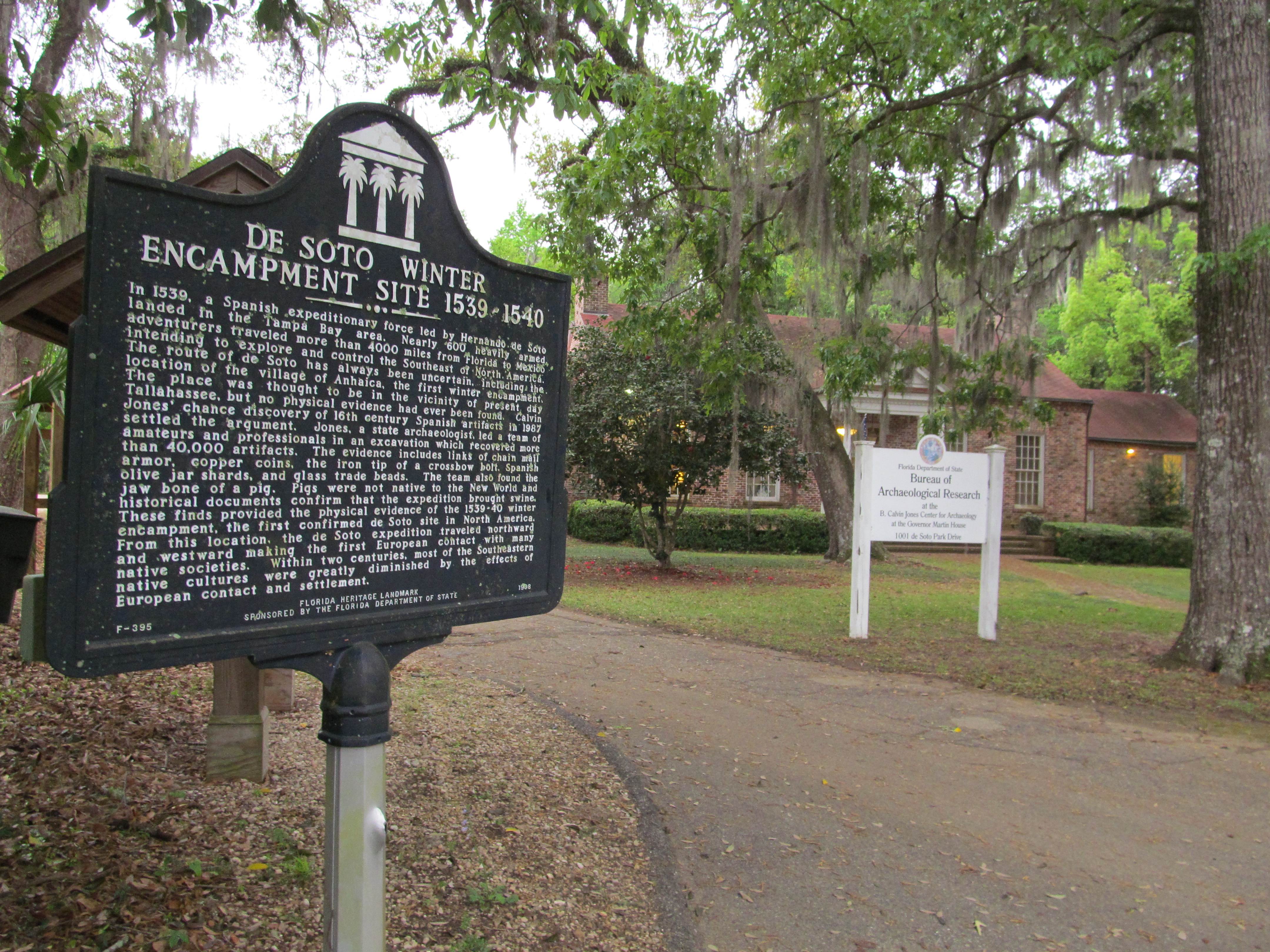(Tallahassee Democrat) -- On this day, 475 years ago, historians believe several Catholic priests conducted masses for Spanish soldiers in Tallahassee — and behold! The first Christmas was observed in what would become the United States of America.
Someday, maybe even by next Christmas, people will be able to commemorate that event at the site where it is presumed to have occurred. The Florida Department of State is still pushing ahead with efforts to turn the site of Spanish explorer Hernando de Soto's 1539-1540 winter encampment in Tallahassee into a visitors' attraction.
The site, on East Lafayette Street, was identified in 1987 by the late state archaeologist Calvin Jones. Visitors already can view artifacts and displays about the de Soto encampment in the Gov. John Martin House, a historic home built on the site in 1933-1937.
But eventually, the state hopes to add walking trails and interpretive signs throughout the 4.38-acre property and conduct regular events there — including an annual Christmas celebration. The site has held occasional Christmas events in the past but no annual event.
"There are a lot of moving parts, but the site is essentially ready for people to come there," said Rob Bendus, director of the state Division of Historic Resources. "I would love to have an event there next Christmas."
The state and city have been working toward the project for two years. The state has cleared up the wooded property, improved parking and is rehabilitating the Martin House, which is listed on the National Register of Historic Places. The Martin House is also home to the state Bureau of Archaeological Research.
The city has worked on improving access to the site, whose location on Lafayette Street adjoining the historic Myers Park neighborhood, is not directly accessible from nearby Apalachee Parkway. The city originally wanted to extend the existing Goodbody Lane from the parkway across Lafayette Street into the east side of the historic site. But over the past year, a new option arose.
A parcel of land on Lafayette Street across from the de Soto site, just west of Goodbody Lane, is being developed for a Chuy's Tex-Mex restaurant. In conjunction with the developer and the Florida Department of Transportation, the city now plans to a build a road from the parkway to the de Soto site through the Chuy's parcel.
The city expects to spend about $500,000 on its portion of the project. But the main cost of the road will be borne by Chuy's, which also intends to build its restaurant in a Spanish theme to reflect a relationship with the de Soto site. The restaurant company's motto is, "Once you've seen one Chuy's, you've seen one Chuy's," because the company prides itself on creating individualized restaurants. The Austin, Texas-based company operates 51 restaurants in 12 states.
"They're buying into the whole concept of what the first Christmas means to our country, not just our city," said Wayne Tedder, director of Planning, Land Management and Community Enhancement for the city and county. "They want people to have good access to their development and to the first Christmas site."
Tedder said it would be late 2015 before Chuy's and the new road are completed. The state hoped to complete its improvements to the de Soto site by then, Bendus said.
"We would hope to coincide with when the city finishes," Bendus said. "We are very appreciative of the city's recognizing the need to enhance access and visibility to the site."
In truth, no record exists of the first Christmas in December 1539. Though there are several chroniclers who accompanied de Soto's 1539-1543 expedition, none detailed day-to-day activities, focusing instead on the hunt for riches and clashes with Native Americans. But historians agree a Christmas observation was probable, as the de Soto expedition included four to six priests, each of whom would have been required to conduct a mass on Christmas. The event would not be a celebration as we think of Christmas today — no gifts, no feasting, no Christmas tree — but rather a somber religious observation.
In truth, it's also not certain the Christmas masses would have been held at the site on Lafayette Street.
For their winter encampment, De Soto and his army took over the Apalachee Indian village of Anhaica, which is known to have been a sprawling settlement with 30,000 inhabitants. Though Jones in 1987 found almost certain evidence of De Soto and his army — shards of 16tth century pottery, beads, crossbow bolts and mail — there is no way to know if those artifacts were from de Soto's main encampment or simply one of the places within Anhaica.
(It also bears mentioning the Spanish explorer's name is generally mis-stated. Historians drop the "de," and refer to him simply as Soto.)
The great room of the Martin House features a case of 16th century artifacts unearthed in 1987. It also has a wall-sized panel with the history of de Soto's expedition and replicas of the materials and uniforms of the era. The Martin House is open to the public Monday through Friday during working hours.
"It's a good hypothesis this was the de Soto site. But I don't know that we'll ever have the data to say with 100 percent certainty," said Dan Seinfeld, an archaeologist with the state Bureau of Archaeological Resources. "There is a good likelihood this was the winter encampment. It's the best explanation with the evidence we have now. But you never know."
De Soto Winter Encampment
The de Soto site is at 1001 De Soto Park Drive, off East Lafayette Street. A free exhibit on De Soto's 1539-1540 winter encampment in Tallahassee, as well as 16th century artifacts, is in the historic Gov. John Martin House on the property. The house, home to the state Bureau of Archaeological Resources, is open to the public Monday through Friday during working hours.


